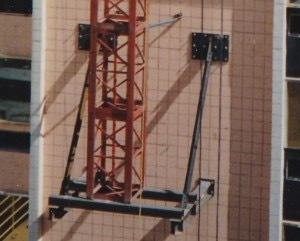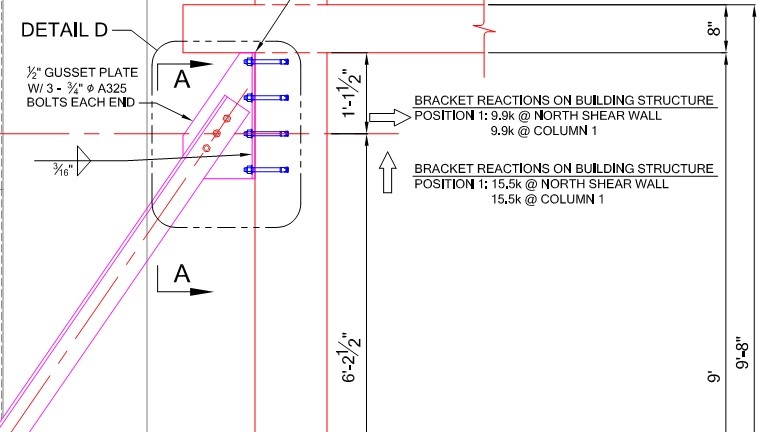General and specific question about reviewing a loads imposed submittal for attachment to a building that you've designed:
- Does the responsibility of the designer for the equipment/system that is loading your structure include the anchorage/anchors? What if the failure is a pullout from your slab/building?
- Specific situation that is making me question this: I have a submittal for a dunlop mastclimber, essentially a small hoist system for installing facade. In order to install this over a neighboring building the designer is using outriggers which support a platform that the hoist is supported on. This will be a 20 story system sitting on the platform. For outriggers they are using double angle hangers that get expansion bolted into our concrete columns and shearwalls. Their calcs are good, including pattern live loads and wind etc. and all applicable spacing and edge distance factors - but their anchors are calc'ing out to in the 0.95 to 1.01 range which they are calling ok. I'm not so brave and if it was me supporting a 20 story hoist I would not trust expansion anchors to that level of confidence. I spoke to the designer and he seems very competent but I suggested using collars around the columns and through bolts through the wall, he said that they do these all over the county and this is what they always do. He said that he can add 2 more anchors if it makes me feel better but it's not necessary. I've reviewed the base building (cols and walls) and there is no issue with the loads imposed. Do I have any responsibility for the capacity of the anchors?
- Does the responsibility of the designer for the equipment/system that is loading your structure include the anchorage/anchors? What if the failure is a pullout from your slab/building?
- Specific situation that is making me question this: I have a submittal for a dunlop mastclimber, essentially a small hoist system for installing facade. In order to install this over a neighboring building the designer is using outriggers which support a platform that the hoist is supported on. This will be a 20 story system sitting on the platform. For outriggers they are using double angle hangers that get expansion bolted into our concrete columns and shearwalls. Their calcs are good, including pattern live loads and wind etc. and all applicable spacing and edge distance factors - but their anchors are calc'ing out to in the 0.95 to 1.01 range which they are calling ok. I'm not so brave and if it was me supporting a 20 story hoist I would not trust expansion anchors to that level of confidence. I spoke to the designer and he seems very competent but I suggested using collars around the columns and through bolts through the wall, he said that they do these all over the county and this is what they always do. He said that he can add 2 more anchors if it makes me feel better but it's not necessary. I've reviewed the base building (cols and walls) and there is no issue with the loads imposed. Do I have any responsibility for the capacity of the anchors?


